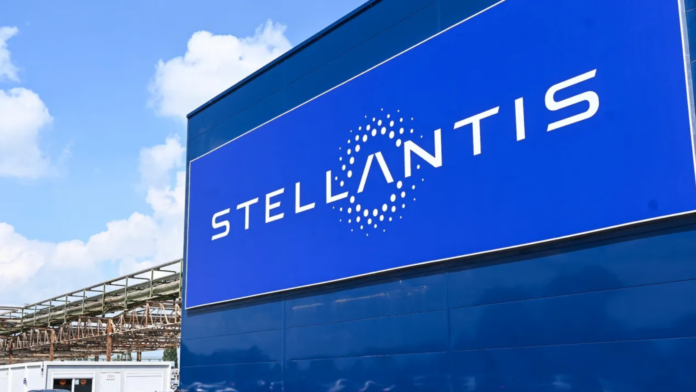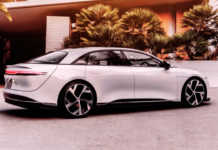Stellantis and Samsung SDI have announced a plan to invest $3.2 billion in a new electric vehicle (EV) battery plant in Kokomo, Indiana. This will be Stellantis’ second battery plant in the United States and its sixth globally. The joint venture, called StarPlus Energy, is already underway with construction of the first U.S. battery plant in Kokomo. The second factory is expected to start production in early 2027 with an annual capacity of 34 gigawatt hours (GWh). The total investment for both factories will exceed $6.3 billion and create 2,800 new jobs.
Stellantis and Samsung SDI have joined forces under the joint venture StarPlus Energy to construct the first U.S. battery plant in Kokomo, Indiana. The construction progress is well underway, and the plant is on track to open by the first quarter of 2025. It will have an annual production capacity of 33 GWh.
In a previous announcement made in July, Stellantis and Samsung SDI revealed their plans to build a second battery plant without disclosing the location or other details. The recent announcement confirms that the second battery plant will also be built in Kokomo, Indiana. The precise timing of the announcement and further details will be provided at a later date. This second plant holds significant importance for Stellantis’ battery ecosystem.
The combined investment for both battery factories will exceed $6.3 billion. This massive investment showcases the commitment of Stellantis and Samsung SDI to the EV market and future technology. Additionally, the construction and operation of these factories will create a total of 2,800 new jobs in Kokomo, Indiana. This investment not only brings economic growth to the region but also reinforces Stellantis’ dedication to sustainable transportation.
Stellantis recognizes the importance of a strong battery ecosystem in its electrification strategy. By partnering with Samsung SDI, a reputable and innovative supplier of lithium-ion battery cells, Stellantis aims to ensure the availability of high-quality battery packs for its electric vehicles. Stellantis has set an ambitious goal of achieving carbon net zero by 2038, and the battery ecosystem plays a crucial role in this objective. In Europe, Stellantis aims for 100% passenger-car battery-electric vehicle sales mix by 2030, while in the United States, the target is a 50% passenger-car and light-duty truck BEV sales mix by the same year.
The announcement of the second battery plant comes at a challenging time for Stellantis due to ongoing negotiations with striking autoworkers. The United Autoworkers (UAW) strike, currently affecting GM and Ford as well, has been ongoing for four weeks. The UAW has expressed concerns about the employment conditions and low wages at battery plants. However, Stellantis remains committed to resolving the strike and finding a resolution that satisfies all parties involved.
The UAW has been focusing on the issue of low-wage jobs at battery plants. They understand the importance of these plants in the future of the automotive industry. The UAW aims to secure fair wages and working conditions for the workers employed in battery production. They believe that these jobs should provide stability and a livable wage for workers, and they are actively advocating for these interests in their negotiations with automakers.
GM recently made a significant concession to the UAW by agreeing to include future EV battery jobs under any new national agreement. This concession represents a significant victory for the UAW and a step towards ensuring fair wages and opportunities for workers in the EV industry. This development puts pressure on Ford and Stellantis to follow suit and provide similar concessions to the UAW, demonstrating their commitment to the well-being of their employees and the industry as a whole.
Stellantis has set ambitious sales targets for electric vehicles in both Europe and the United States. They aim for a 100% passenger-car battery-electric vehicle sales mix in Europe by 2030 and a 50% passenger-car and light-duty truck BEV sales mix in the United States by the same year. These targets reflect Stellantis’ commitment to a sustainable future and the transition away from internal combustion engines.
In conclusion, the partnership between Stellantis and Samsung SDI to build a $3.2 billion EV battery factory in Kokomo, Indiana, is a significant step towards the electrification of the automotive industry. This investment not only boosts the local economy but also emphasizes Stellantis’ commitment to sustainable transportation and the well-being of its employees. The construction of these battery plants aligns with Stellantis’ electrification strategy and contributes to its goals of achieving carbon net zero and transitioning away from internal combustion engines. The ongoing negotiations with striking autoworkers and the UAW’s concerns about low-wage jobs highlight the importance of fair employment practices in the rapidly expanding EV industry. The concession made by GM to include future EV battery jobs sets a precedent for other automakers like Ford and Stellantis to follow suit and demonstrate their dedication to the workers and the industry’s future. With these battery plants and its ambitious EV sales targets, Stellantis is solidifying its position as a leader in the global EV market.












